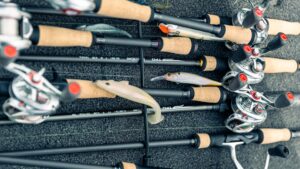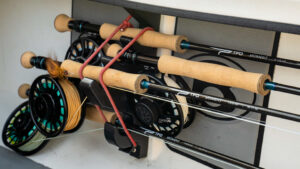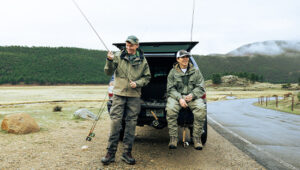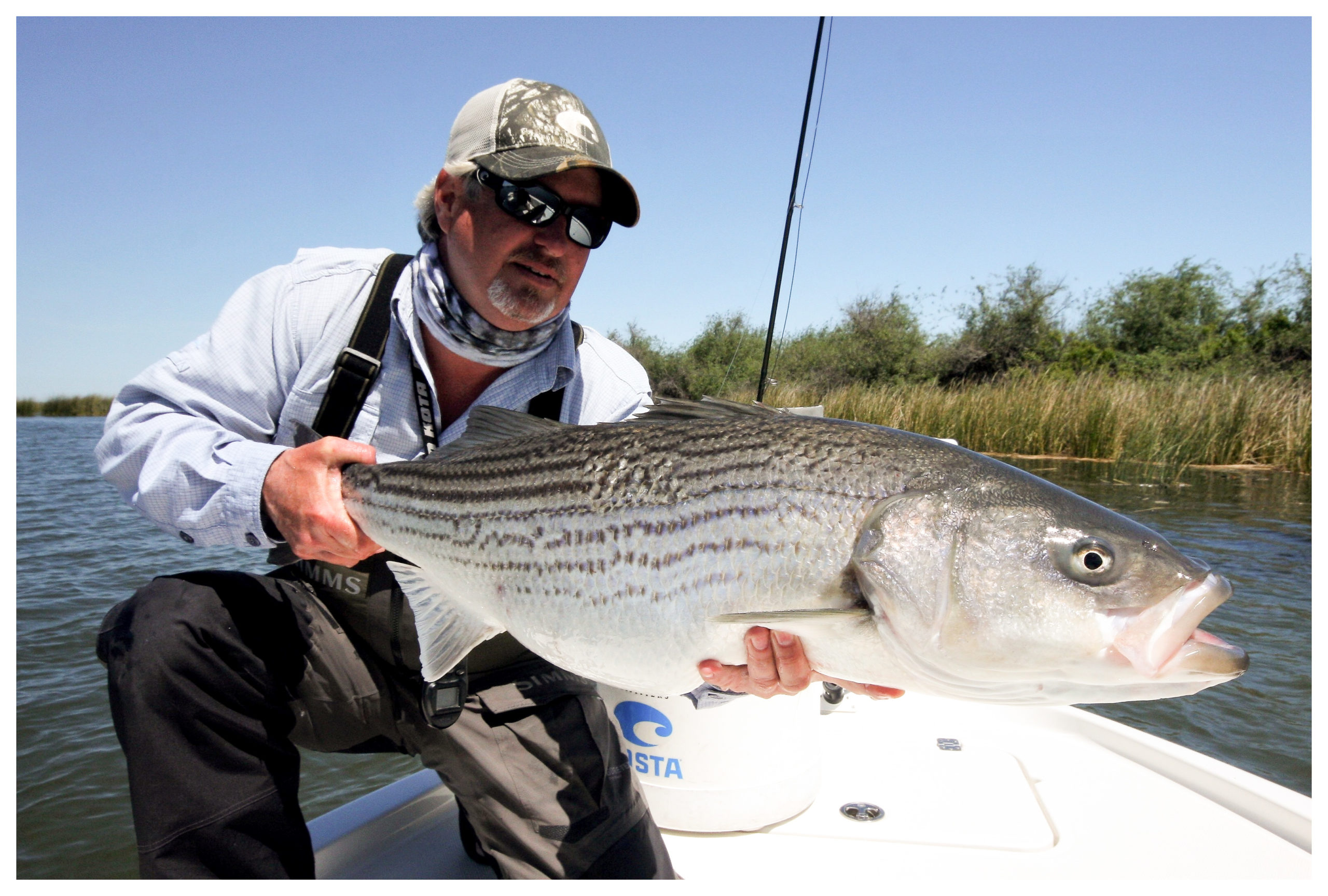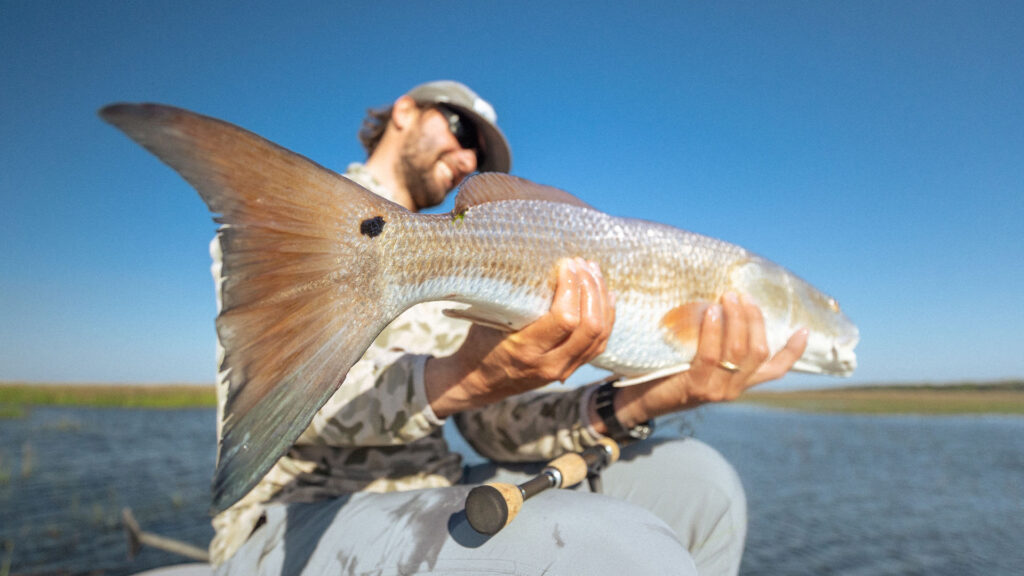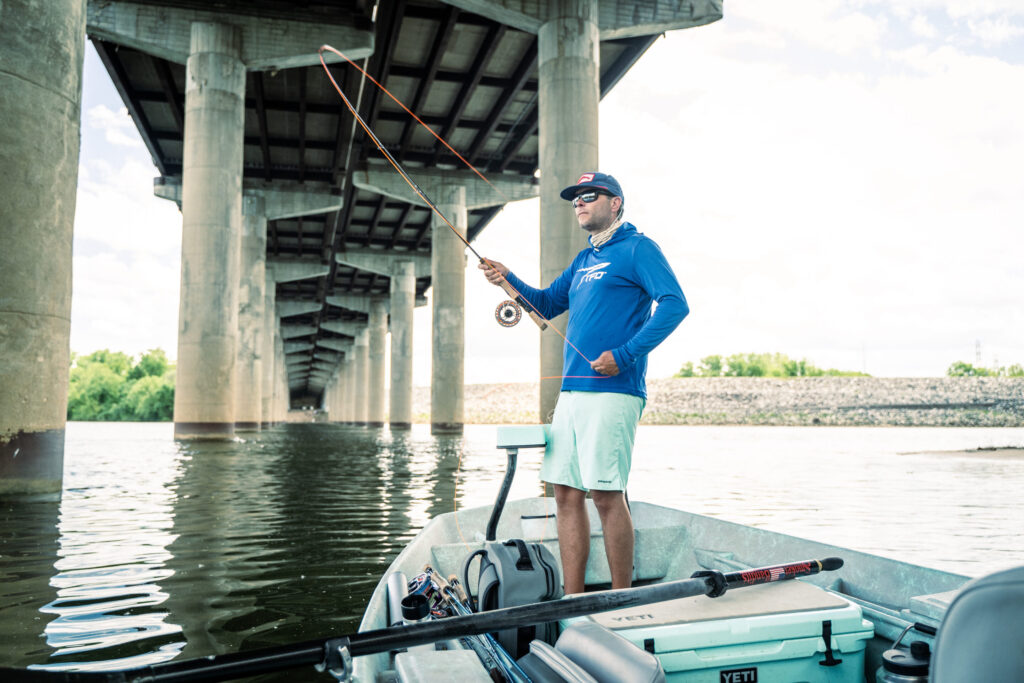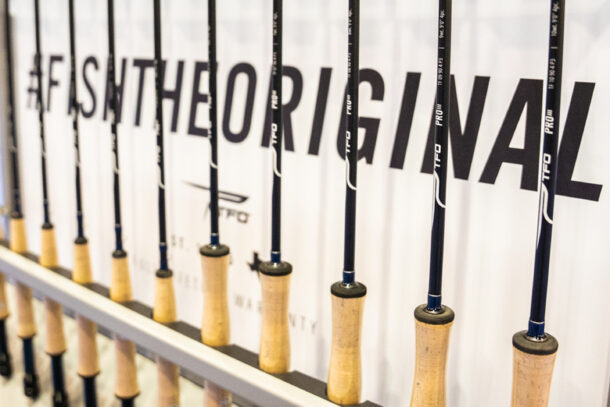Fall is in the air and with cooler nights upon us, striped bass anglers anticipate the fall striper bite on the Sacramento-San Joaquin Delta. This is a precious piece of water to California and is rich in wildlife and agriculture that supplies not only water to the majority of California’s central valley but a wide range of fishing and hunting.
Striped bass were introduced to California’s San Francisco Bay in 1879 and another few hundred released once again in 1882. These fish have flourished in the early years but in recent years have declined due to a combination of things due to lack of water during drought years and water management across the state. That is a whole other topic to be discussed at another time, right now I want to talk about fall stripers!

Topwater anyone? Photo: Toby Uppinghouse
Why Fish For Striped Bass?
Striped bass, these fish grab hard, pull hard and some days your arm feels like it is going to fall off at the end of the day. We find a lot of smaller stripers called schoolies which are in the one to five pound class and can be in schools of hundreds. Then there are the moments you find a school of six to ten pounders with multiple hook ups of this size, these are days you never forget. In earlier years we used to find a decent amount of twenty pounders and plus, but we have noticed there are fewer of these monsters around these days. A good solid fish that we see commonly these days are 8-15 pounds but still see that occasional trophy in the 40 lb. to 50 lb. size.

Fall can be a very rewarding time to chase striped bass on the fly. Photo: Toby Uppinghouse
‘Tis The Season(s)
The Sacramento-San Joaquin Delta primarily has two striped bass seasons, Spring and Fall. In the Spring, the stripers move from the ocean and San Francisco Bay entering the Sacramento-San Joaquin Delta and proceeding further up the river for spawning in the spring months. We have noticed over the years not all the migratory stripers return to the Bay so quick after spawning. A good number of striped bass are continuing to stay in the river system well after the spawning due to the cooler water and the abundance of bait in the river systems. Eventually most of the striped bass head back to the Delta and Bay in late summer months and early fall following other anadromous fish like salmon smolt and steelhead smolt making their way to the ocean. In these months of late September, October and November the Delta waters become a desirable temperature for the Stripers and other fish species in the Delta.

Photo: Toby Uppinghouse
The Perfect Temperature
Bringing us to the discussion of fall stripers! The Delta water temperatures are now cooling in the fall months with the bait consisting of threadfin shad showing from the bay. Other predators such as sea lions and sea gulls have arrived as well to feed on the abundance of bait in the system. The sea gulls from above put on a show busting bait on the surface and aggressive hungry stripers attacking from below. These are the days you can have arm wrenching pulls with crazy numbers of fish. This is prime time to target the Delta for these striped bass feeding before the winter temperatures set in. Desirable water temperature for these feeding stripers are 55-65 degrees. The striper bite tends to really slow down when the water temperature gets below 55 degrees and even slower below 50 degrees. I usually see this in the later part of December. So, you have two and a half months of a prime striper bite to find that monster striper you are desperately looking to hook.

Photo: Toby Uppinghouse
Choosing The Right Rod & Reel
Targeting these striped bass when it comes to equipment, I prefer fly rods in a 9 foot, 7 to 9 weight with a good solid drag on the reel for that monster fish we are targeting. The BVK-SD reel and the Power Reel that TFO offers are two excellent reels to choose from. Some of my favorite rods are anywhere from the Mangrove, Axiom II, Axiom II-X and the new LK Legacy. The Mangrove has been a great rod for casting to selected areas where precision is a must, it loads quick and has a smooth delivery. I favor the Axiom II and the Axiom II-X for a powerful rod. This rod will deliver a heavily weighted fly at a distance cast with minimal exertion. It handles both floating and sinking lines and is very light to the hand for that long day of casting.

The Axiom ll + Power Reel combo make a great set up for chasing striped bass on the fly. Photo: Toby Uppinghouse
The Right Fly Lines For The Right Occasions
I use a variety of lines depending on the tide, the time of the day and water depth. This means anything from a floating line, an intermediate line to even a fast sinking line. I love to target these stripers with topwater poppers, but it can typically be a small window for this desired technique. Best conditions for this topwater bite are low light and a high tide. So, if I specifically want to target topwater stripers I look for a high tide at first light. This will give you your best opportunity to find that big blow up on your topwater fly.
Fishing an intermediate line can be a small window as well. I usually find that this line is an excellent choice when stripers are chasing or cruising for bait at high tide on a shoal or tight to the bank of three to four feet in depth.

TFO Power Reel. Photo: Toby Uppinghouse
Majority of the time I am fishing a fast sinking line on the Delta. This gives you the best opportunity to fish a lot of different depths of water. You can strip it quick for shallower water and let it dredge for that deeper water that is holding those schools of fish. This line will also help you achieve getting to that desired depth quicker than other lines in fast moving tides. The sinking fly line is usually a 24ft to 30ft sink tip with an intermediate running line. Most fly line companies build these lines now days and are offered in many different grain weights that will match up with your TFO rod that you choose to use.

Having a fast sinking line can help you get down to fish holding lower quicker. Photo: Toby Uppinghouse
What Are They Hitting?
There are so many flies to choose from, but you can keep it simple as well. I prefer a fly in a Clouser style, what I mean by that is that the fly is weighted and with the hook riding upright. This fly is great to get down to the fish and the fly performs an excellent jigging motion as you strip the fly back that stripers cannot resist. I like to have a few different sizes ranging anywhere from a size 2 to a 3/0 hook to match the bait around. Choosing colors of a fly depend on the color of the water, time of day, and the type of bait we are simulating. I primarily use Gray/White, Chartreuse/White, Olive/White and one of my specialties Olive/Pink/White that resemble a salmon or steelhead smolt.

You can’t go wrong with a box of Clousers. Photo: Toby Uppinghouse
TFO Ambassador and Advisory Staff
![]()
